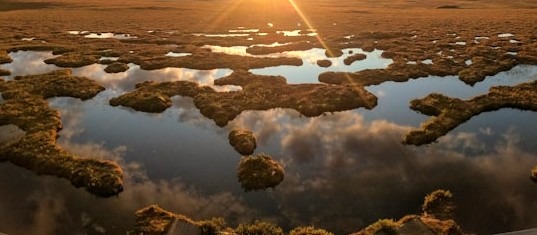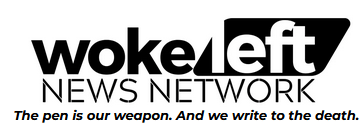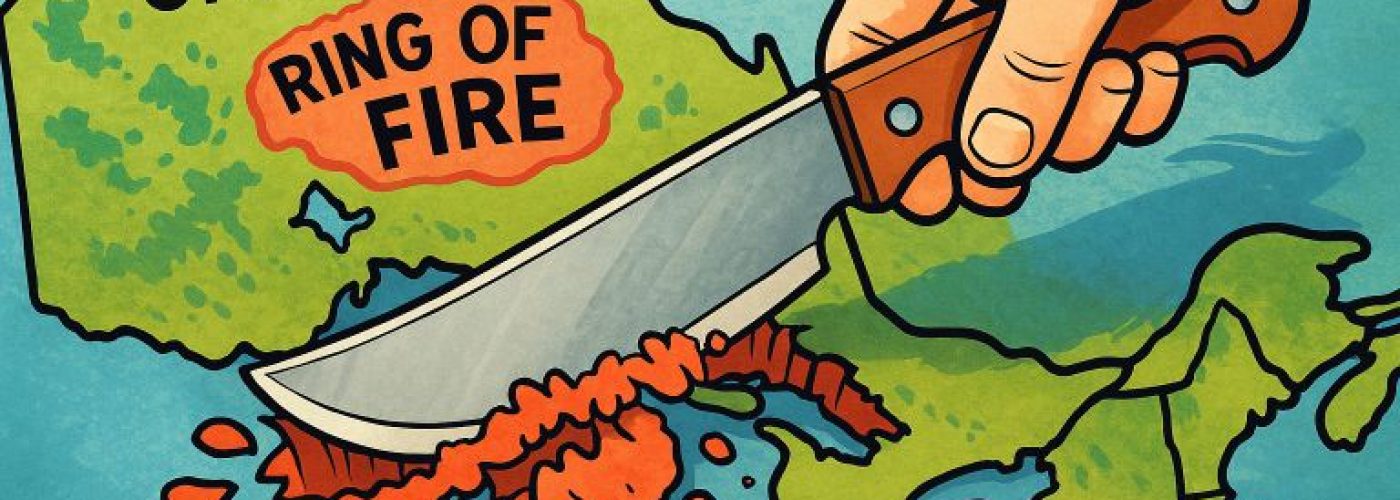Bill 5 fast-tracks development in Ontario’s Ring of Fire by gutting environmental protections and bypassing Indigenous consultation — all in the name of profit.
The Ford government is at it again. With Bill 5, the so-called Protecting Ontario by Unleashing Our Economy Act, 2025, Doug Ford and his team are pushing forward legislation that doesn’t just threaten Ontario’s environment — it steamrolls over it. And just like so many of their other signature moves, it does so while ignoring the rights and voices of Indigenous communities.
The government claims this bill will “expedite economic development,” especially in the mineral-rich Ring of Fire region in northern Ontario. But that claim is a smokescreen. What Bill 5 really does is gut environmental protections, weaken oversight, and fast-track mining and infrastructure projects without proper consultation or accountability.
Continuing a Disturbing Pattern
This isn’t a new direction for the Ford government — it’s a continuation of a deeply troubling pattern. Since coming to power, Doug Ford has repeatedly demonstrated that when it comes to the environment, he sees regulations as obstacles and communities as inconveniences.
Remember the Greenbelt scandal, where Ford tried to open up thousands of acres of protected land to wealthy developers before being forced to backtrack after massive public outcry? (And yes, while some of the land has been returned, as of early 2025, many questions remain about who profited from the attempt and how much land was actually restored.) Or how about when his government eliminated the office of the Environmental Commissioner and gutted funding for conservation authorities? This is not a government interested in balance or long-term stewardship. It’s a government that consistently sides with those who stand to profit the most.
What Does Bill 5 Actually Do?
Bill 5 proposes sweeping changes that will:
- Allow major developments to skip environmental assessments. Previously, large-scale projects like mines, highways, and industrial infrastructure required Environmental Assessments (EAs) to identify ecological risks and mitigation strategies. Bill 5 would enable the Minister of the Environment to exempt such projects from these reviews entirely or significantly weaken their scope, speeding approval but reducing oversight.
- Weaken the Endangered Species Act by changing how habitat protection is applied, giving developers more leeway to destroy ecosystems critical to threatened wildlife if they promise to “compensate” with restoration elsewhere — a move biologists have long criticized as ineffective.
- Limit the ability of the public (and First Nations) to participate in decision-making by reducing public notice requirements and consultation timelines. For example, instead of holding proper hearings and publishing environmental concerns in advance, the government could now push decisions through with minimal input under the guise of “streamlining.”
- Centralize power in the hands of the Minister — specifically, the Minister of Municipal Affairs and Housing and the Minister of the Environment — enabling top-down zoning and approvals. This means municipalities can be overruled and projects can be approved even if local governments, conservation authorities, or Indigenous communities object. This opens the door to unchecked development and reduced accountability. A perfect example of this was the controversial use of Minister’s Zoning Orders (MZOs) to force through warehouse developments in protected areas like Duffins Creek.
These changes, reflected in Bill 5, directly benefit mining and infrastructure companies looking to exploit the Ring of Fire — an ecologically sensitive region home to vast peatlands that act as one of the largest carbon sinks in the world. Peatlands are slow-forming ecosystems that lock away carbon for thousands of years. Disturbing them releases that carbon into the atmosphere, undermining climate goals.
Who are these companies? Major players include Wyloo Metals (ironically boasting “We produce critical materials for a green energy future” on their home page) website, which acquired Noront Resources, and Canada Nickel Company, which is developing large-scale nickel extraction and processing operations. Nickel and chromite are indeed used in electric vehicle batteries and stainless steel, but experts argue that more sustainable, less ecologically sensitive areas for mining already exist in Ontario and Quebec. What makes the Ring of Fire so attractive is not its necessity — it’s the profit margins from starting fresh on untouched land, without the burdens of remediation or local opposition (once that opposition is pushed aside).
Ignoring Indigenous Voices
The most infuriating part? The blatant disregard for Indigenous communities.
Groups like the Nishnawbe Aski Nation have been crystal clear: they were not meaningfully consulted on Bill 5. This bill flies in the face of free, prior, and informed consent — a core principle in the UN Declaration on the Rights of Indigenous Peoples, which Canada has affirmed. UNDRIP recognizes the right of Indigenous peoples to say “no” to development on their traditional territories unless full consultation has occurred, and they have agreed without coercion.
Is the Ring of Fire all First Nations land? Much of it lies within Treaty 9 territory, which is home to many First Nations whose legal rights to the land and resources are recognized by the Crown. Despite this, many of these communities have been excluded from planning or were only engaged late in the process. While Webequie and Marten Falls First Nations have signed agreements for early-stage infrastructure development, others like Neskantaga First Nation have declared moratoriums, stating that the process violates their rights and threatens their way of life.
Who Profits from This?
- Mining corporations: Wyloo Metals and Canada Nickel Company stand to benefit from massive regulatory rollbacks that make their projects cheaper and faster to execute.
- Construction and infrastructure firms: Companies building the new roads, bridges, and transmission lines into the region (like Hatch Ltd., SNC-Lavalin, and others) will win large-scale government contracts funded by taxpayers.
- Real estate and land developers: As we saw with the Greenbelt scandal, insider information and rezoning can make land speculation highly profitable. Properties surrounding Ring of Fire infrastructure corridors have already attracted interest from speculators.
- Political allies and donors: Many of the executives and investors behind these industries have donated generously to the Ontario PC Party, and past investigations have linked policy decisions to donor wishlists — including the Greenbelt land swaps. It’s a closed loop of influence, money, and access.
Meanwhile, Indigenous communities face enormous risk: loss of land, contamination of waterways, destruction of culturally significant sites, and threats to traditional hunting, fishing, and harvesting. Some regions are so remote that an oil spill, tailings dam breach, or fire could go unnoticed until it’s too late. These aren’t just hypothetical scenarios — they’ve happened before in similar contexts.
Environmental Consequences
The Ontario Nature group and other conservation voices have warned that the legislation puts some of Ontario’s most critical natural systems at risk. Peatlands store more carbon than all the forests in the world combined. Disrupting them releases greenhouse gases and threatens biodiversity at a time when we can least afford it. Once gone, these ecosystems take millennia to recover — if they recover at all.

PETITION: Stop Bill 5 and Restore the Integrity of the Endangered Species Act: https://ontarionature.good.do/bill-5-stop-attacks-on-endangered-species/call/
Final Thoughts: We Deserve Better
We’re in a climate crisis. We’re in a biodiversity crisis. And yet, the Ontario government thinks this is the right moment to gut protections, steamroll Indigenous rights, and sell off our natural heritage to the highest bidder.
Bill 5 is not only bad policy, it’s an insult to science, to Indigenous sovereignty, and to every Ontarian who believes our environment is worth protecting.
If you’re not outraged yet, you’re not paying attention. And if we don’t stop this now, we’re going to be paying for it for generations.
Additional Resources:
Ring of Fire https://en.wikipedia.org/wiki/Ring_of_Fire_(Northern_Ontario)
Ontario is scaling back species at risk protections, worrying advocates and inviting federal intervention https://www.cbc.ca/news/science/ontario-species-at-risk-changes-1.7522227
Doug Ford government one of the most ‘anti-environmental’ in generations, says Green Party leader https://www.cbc.ca/news/canada/toronto/doug-ford-climate-change-environment-plan-1.5104740
Ford, more years? How Ontario’s environment fared under the Progressive Conservatives https://thenarwhal.ca/ontario-election-2025-environmental-policy/
What’s at stake in Ontario’s Ring of Fire https://canadiangeographic.ca/articles/whats-at-stake-in-ontarios-ring-of-fire/



